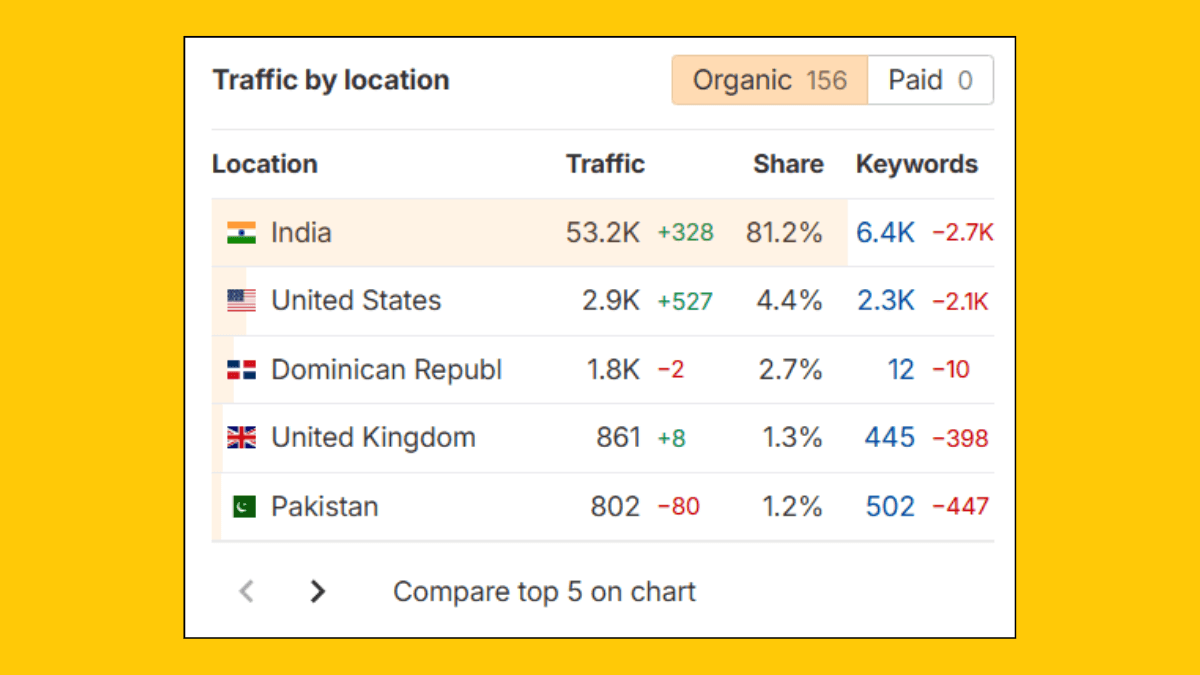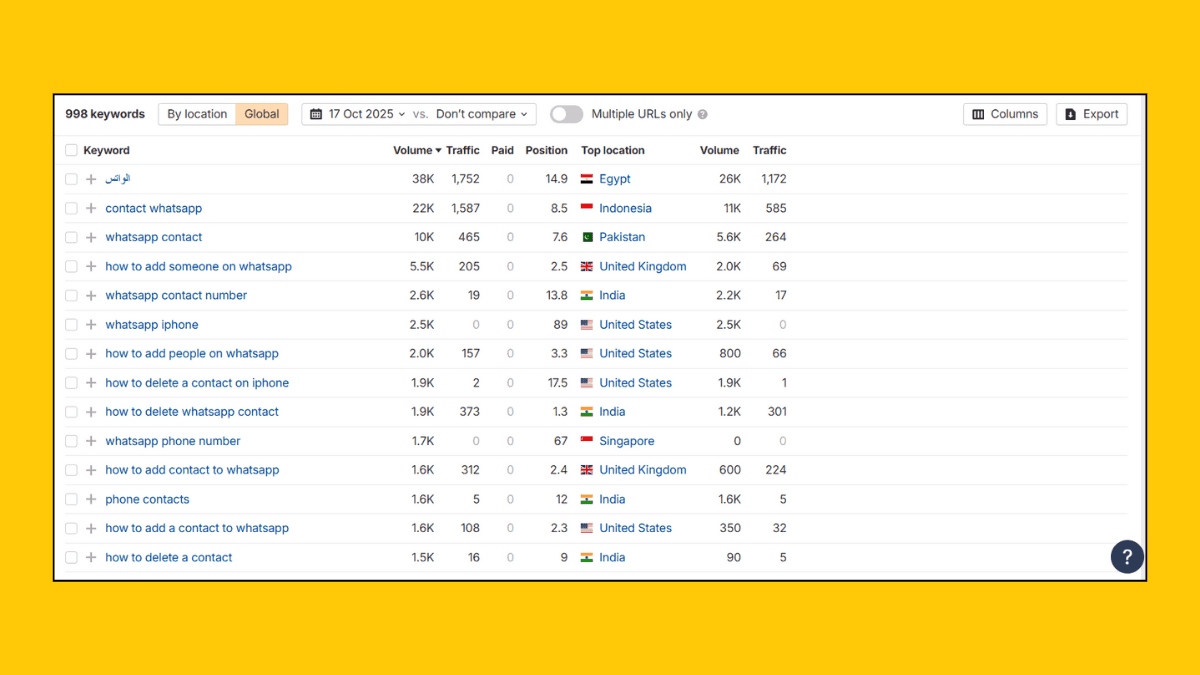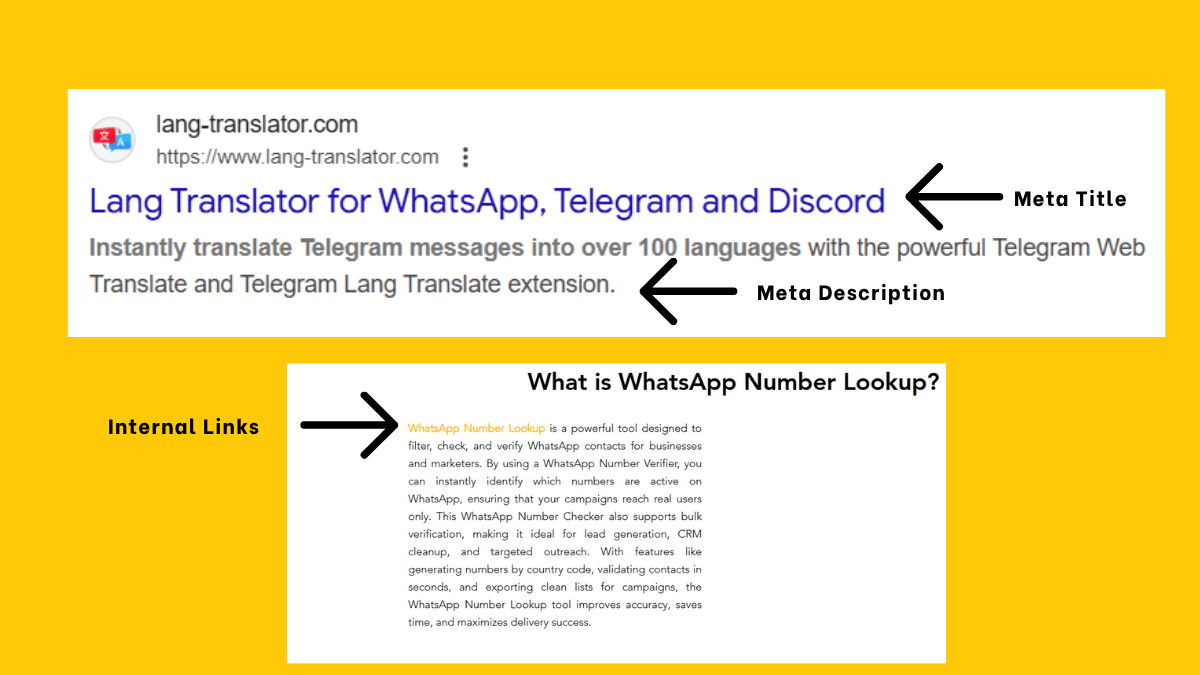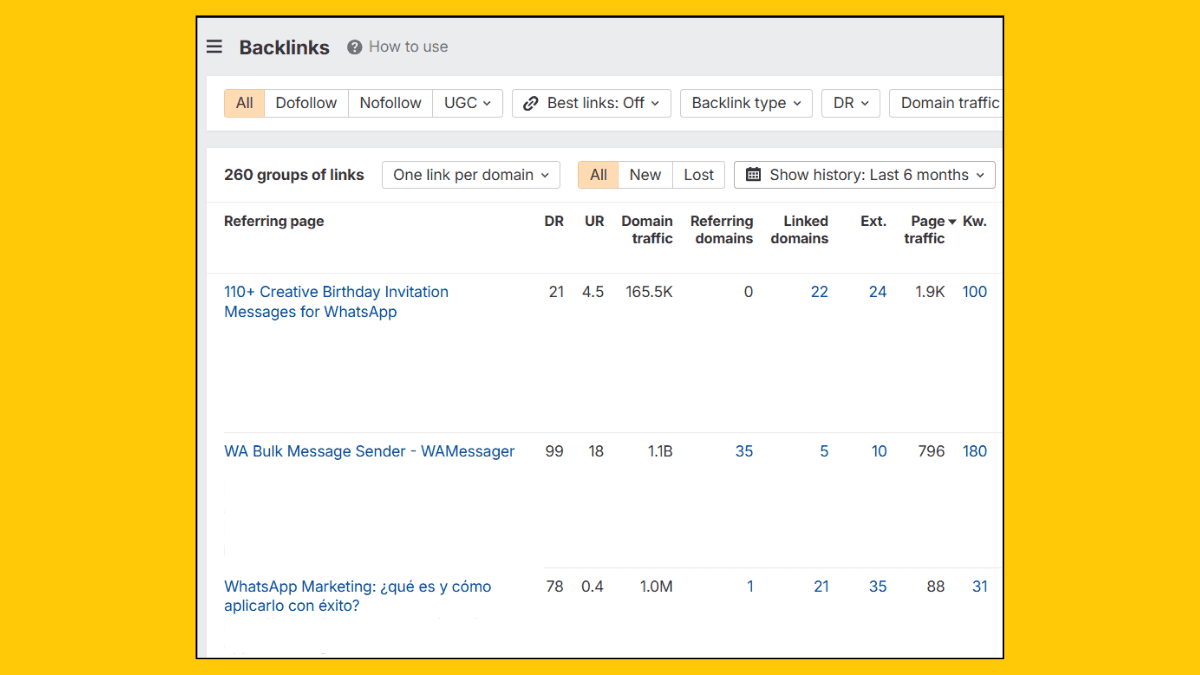Oct 17, 2025
|
5
min read

Share It On:
Key Takeaways
Translate and localize your website for each target country’s language and culture.
Conduct keyword research in the local language using native speakers, not automated tools.
Use clear URL structures like subfolders, subdomains, or ccTLDs for each language version.
Optimize on-page elements such as title tags, meta descriptions, URL slugs, and image alt texts for every language.
Implement hreflang tags to help search engines show the right language version.
Build local backlinks and monitor performance to boost authority and rankings in each market.
Introduction
Multilingual SEO is key for websites aiming to reach audiences in multiple languages. By applying multilingual SEO strategies like translate SEO, SEO translations, and website translation SEO, you can boost global visibility and search rankings. Understanding what is SEO translation and SEO localization helps create SEO translated content and SEO friendly website translation that performs well across regions. With proper multilingual SEO, your site can attract international traffic while staying optimized for search engines in every language.
Multilingual SEO involves optimizing your website to rank in search engines across multiple languages and regions by using translate SEO, SEO translations, and website translation SEO. This includes SEO localization, adapting content, metadata, and URLs to different languages, and using localize SEO strategies. Key practices like implementing hreflang tags, targeting language SEO, and tailoring SEO translated content to cultural nuances enhance user experience and help your site reach a wider, global audience effectively.
What Is Multilingual SEO?
Multilingual SEO is the practice of optimizing a website to rank in search engines for multiple languages and regions. It focuses on translate SEO, SEO translations, website translation SEO, and SEO translated content to ensure your site reaches a global audience. Implementing SEO localization, localization SEO, and localize SEO helps tailor content, metadata, and URLs to different languages, improving both visibility and user experience.
Effective multilingual SEO also includes targeting language SEO, multilingual website SEO, multi regional SEO, and SEO multilingual strategies. Using SEO friendly website translation, site multilingue SEO, and SEO multilingual website techniques ensures your content ranks well in international search results while connecting with users in their preferred language and cultural context.
Difference Between Multilingual SEO and Multiregional SEO
Multilingual SEO and multiregional SEO both help expand your website globally but focus on different strategies. Understanding the difference is key for effective international SEO.
1. Audience Targeting
Multilingual SEO reaches users in different languages using SEO translation and website translation SEO.
Multiregional SEO targets users in specific countries or regions with multi regional SEO strategies.
2. Content Strategy
Multilingual SEO focuses on translating and localizing content with SEO friendly website translation and local keywords.
Multiregional SEO adapts content for regional needs like pricing, visuals, or cultural elements while language may stay the same.
3. Technical Approach
Hreflang tags help multilingual SEO show the right language version to users.
Geotargeting and regional domains or subfolders support multiregional SEO to reach the correct country-specific audience.
How to Perform Multilingual SEO?
Expanding your online presence internationally requires more than simple translation it needs a well-structured multilingual SEO strategy. With the right approach to SEO translation, SEO localization, and website translation SEO, your site can attract visitors from multiple regions while ranking well in global search results. Let’s look at how to perform multilingual SEO effectively to reach audiences across languages and countries.

Step 1: Identify Your Target Markets
Before starting multilingual SEO, first find which countries and languages have the most potential for your business.
Analyze Market Demand
Look for countries with high search interest in your products or services.
Tools like Semrush’s Market Explorer can show search traffic potential in each region.
Translate Content Strategically
Translate your website content into the main language of the target country.
Example: French for France, Portuguese for Brazil.
Study Competitors
Check where competitors get their traffic.
Use tools like Semrush Domain Overview to identify high-traffic countries.

Step 2: Conduct Keyword Research for Your Chosen Countries
Keyword research ensures your translated content matches local search intent and drives traffic.
Use Native Speakers
Hire translators or native speakers for accurate keyword ideas.
Avoid automated translations like Google Translate for keyword research.
Seed Keywords
Start with broad terms related to your business.
Expand them using tools like Semrush Keyword Magic Tool for search volume, trends, and difficulty.
Optimize for Local Search
Focus on the words and phrases your audience actually uses.
Apply these keywords in page content, title tags, and meta descriptions.
Step 3: Decide Your URL Structure
A clear URL structure helps search engines index your site properly and improves multilingual SEO.
Separate Domains
Use country-specific domains like example.fr or example.de.
Gives local branding and allows local hosting for faster load times.
Requires separate SEO efforts for each domain.
Subfolders
Use subfolders under the main domain like example.com/fr/ or example.com/es/.
Easier to manage and maintain SEO authority.
Add new languages by creating new subfolders.
Subdomains
Use subdomains like fr.example.com or es.example.com.
Allows localized hosting for better speed.
Google may treat subdomains as separate websites, so SEO authority must be built separately.
URL Parameters
Avoid using parameters like example.com?lang=fr.
Confuses search engines and can harm rankings.
Step 4: Translate and Optimize Your Pages

Translating pages correctly and optimizing on-page elements is essential for rankings in each language.
Title Tags
Appear as headlines in search results.
Keep under 60 characters, include target keywords, and avoid clickbait.
Meta Descriptions
Short description under the title in search results.
Keep under 120 characters, include keywords, and use active voice.
URL Slugs
Part of the page URL.
Keep short, descriptive, use hyphens, lowercase letters, and include keywords.
Image Alt Texts
Describe images for search engines and accessibility.
Translate and optimize alt text for each language.
Internal Links
Link pages in the same language to each other.
Helps users navigate and helps search engines understand relationships.
Step 5: Implement Hreflang Tags
Hreflang tags tell search engines which page version to show based on language or region.
Correct Implementation
Place tags in the
<head>section of all translated pages.Use proper ISO language and country codes (example: en, es, fr).
Include self-referencing hreflang tags for each page.
Benefits
Prevents duplicate content issues.
Ensures users see the correct language version in search results.

Step 6: Build Local Backlinks
Backlinks improve your website authority in each target language and region.
Target Relevant Sites
Get links from websites in the same language and industry.
High-authority sites like blogs, media, and niche portals are valuable.
Broken Link Building
Find broken links on other sites and suggest your content as a replacement.
Helps get high-quality backlinks naturally.
Digital PR
Share newsworthy stories or research to gain media coverage.
Use digital PR tools to find journalists and media outlets in target countries.
Competitor Backlink Analysis
Study backlinks of competitors to find opportunities.
Create similar content to earn links and improve rankings.
How to Improve Ranking on SERP through Multilingual SEO?
To rank higher globally, you must use multilingual SEO strategies that go beyond simple translation. Focus on SEO translation, website translation SEO, and SEO localization to optimize every language version of your site for local audiences.
1. Research Local Keywords for Each Market
Start with translate SEO and local language SEO research. Find how users search in their own language and adapt keywords naturally. Use SEO translations that match local intent to improve your multilingual site SEO visibility.
2. Use SEO-Friendly Website Translation
A proper website translation SEO approach means translating all titles, descriptions, and metadata accurately. Avoid literal translation and use SEO friendly website translation to make your pages relevant for every region.
3. Implement Correct Hreflang Tags
Hreflang tags are key for multilingual search engine optimization. They signal to search engines which language or region your content targets, preventing duplicate issues and helping your SEO multilingual website rank in the right country results.
4. Build Local Backlinks and Authority
Increase your multilingual SEO rankings by earning backlinks from regional sites. Local citations and authority links boost localization SEO and help your translated pages perform better on local SERPs.
5. Optimize Technical SEO for Speed and UX
A fast, mobile-friendly site supports both translation SEO and multi regional SEO. Use local hosting, structured data, and optimized URLs for every language to improve global ranking performance.
6. Localize Content for Each Audience
True SEO localization means adapting not just text but visuals, offers, and tone. Localized experiences improve engagement and make your multilingual website SEO stronger across different markets.
Multilingual SEO Best Practices
Following the right multilingual SEO best practices helps improve search visibility across different languages and regions. By combining SEO translation, SEO localization, and website translation SEO techniques, you can build a stronger global presence and attract more organic traffic.
1. Choose the Right URL Structure
Use a clear URL structure such as country-code domains, subdomains, or subdirectories for every language. A proper URL setup supports multilingual search engine optimization and helps search engines identify localized content.
2. Translate and Localize All On-Page Elements
Go beyond content translation and focus on SEO friendly website translation. Localize titles, descriptions, headings, and image alt text. Proper SEO translations and localization SEO make each language page relevant to local users.
3. Implement Hreflang Tags Correctly
Always add hreflang tags to indicate the language and region of each page. This prevents duplicate content issues and ensures your multilingual site SEO performs well on different country SERPs.
4. Optimize for Local Keywords and Search Intent
Use keyword research tools to find how users search in each language. Translate SEO keywords naturally and align them with regional trends. Multilingual SEO works best when every version of your site targets specific local search intent.
5. Maintain Consistent Technical SEO
Each version of your site should be fast, mobile-optimized, and easy to navigate. A strong technical base supports translation SEO and multi regional SEO, ensuring your site performs well globally.
6. Build Backlinks from Regional Sources
Earn backlinks from local domains, directories, and media platforms to boost domain authority. Quality regional links strengthen SEO multilingual website performance and help rank your translated content higher in local results.
7. Localize User Experience and Design
Adjust visuals, currency, tone, and offers according to the target market. A culturally adapted multilingual website SEO approach improves engagement, retention, and conversions across different languages.
Benefits of Multilingual SEO
Multilingual SEO helps businesses expand their reach, connect with international audiences, and boost visibility across global search engines. By combining SEO translation, SEO localization, and website translation SEO, you can make your site more discoverable and appealing to users worldwide.
1. Increases Global Search Visibility
With multilingual SEO, your website appears in multiple language search results. Using SEO translations and local keywords ensures better ranking in various countries, helping your multilingual site SEO attract more organic traffic.
2. Builds Trust and Local Credibility
Users trust websites that communicate in their native language. Through SEO friendly website translation and localization SEO, you create culturally relevant content that builds credibility and stronger connections with local audiences.
3. Improves Conversion Rates
When visitors understand your content easily, they are more likely to take action. Translating and localizing pages improve user engagement and boost conversions, making your SEO multilingual website more profitable.
4. Strengthens Brand Awareness Worldwide
Multilingual search engine optimization helps your brand stand out in international markets. By adapting messaging and visuals to local preferences, you expand your recognition and reputation across regions.
5. Reduces Competition in Local Markets
Many businesses still rely on English-only websites. By applying website translation SEO and multi regional SEO, you can target less competitive keywords in local languages and capture untapped markets.
6. Enhances Overall User Experience
SEO localization ensures your site is tailored to the culture, tone, and preferences of each region. A smooth and relatable user experience encourages repeat visits and supports long-term global growth.
Conclusion
Multilingual SEO is a powerful strategy for businesses looking to expand their global reach. By leveraging SEO translation, website translation SEO, and SEO localization, you can optimize content for multiple languages, improve user experience, and increase search visibility in diverse markets. Properly translating metadata, URLs, and on-page content ensures each language version ranks well and meets local search intent.
In addition, combining technical SEO elements like hreflang tags, multilingual sitemaps, and dedicated URLs with local backlink building strengthens your multilingual site SEO. Monitoring performance in each market allows you to refine strategies and achieve better results. Implementing these multilingual SEO best practices helps your brand grow internationally and drives more organic traffic across languages and regions.
Bonus Tip: Use WhatsApp Translator to Translate Messages on WhatsApp Web
If you often use WhatsApp on your desktop, there's a smart way to translate messages without switching tabs. With a WhatsApp translator extension on your browser, you can instantly translate incoming and outgoing messages directly on WhatsApp Web.
Step 1: Install the WhatsApp Translator Extension

Add the WhatsApp Translator Extension from the Chrome Web Store and pin it to your browser for easy access.
Step 2: Detect Any Language

Paste the message. The WhatsApp translator automatically detects the language.
Step 3: Reply in the Same Language

Type your response. The translator for WhatsApp will convert your reply accurately.
Step 4: Auto-Translate While Typing

Turn on auto translate WhatsApp. Your messages are translated live, as you type. This process uses WhatsApp automatic translation and ensures fast and efficient multilingual WhatsApp chats.
FAQ's
Q. What are the 4 types of SEO?
On-page SEO focuses on optimizing content and page elements like title tags, meta descriptions, headings, and keywords. For multilingual websites, combining on-page SEO with SEO translation and SEO friendly website translation helps content rank across multiple languages.
Off-page SEO includes activities outside the website that build authority, such as backlinks from reputable sites and content promotion. Multilingual SEO benefits from links on local-language websites to improve regional visibility.
Technical SEO covers back-end elements that make a site crawlable and indexable, including site speed, mobile-friendliness, security, and structured data. Proper technical SEO supports both multilingual site SEO and multi regional SEO.
Local SEO helps businesses appear in search results for specific geographic areas by optimizing local keywords, maps, and regional content. When paired with translation SEO, it ensures each language version is relevant to local users.
Q. What is the difference between international and multilingual SEO?
International SEO is a strategy aimed at targeting multiple countries and regions, which may include different languages. Multilingual SEO, on the other hand, focuses specifically on optimizing content for various languages, even within the same country. Multilingual SEO is a key part of international SEO, using SEO translation, website translation SEO, and SEO localization to reach speakers in different languages. For example, an international SEO strategy might adapt an English site for U.K. users, while multilingual SEO would create a Spanish version to engage Spanish-speaking audiences in both countries.
Q. What are the key strategies for successful multilingual SEO?
Localize Content: Adapt content, metadata, and URLs using SEO translation, SEO localization, and website translation SEO. Use local keywords and native experts.
Technical SEO: Use dedicated URLs, hreflang tags, and a multilingual sitemap to support multilingual site SEO.
Build Authority: Acquire local backlinks and track performance in each market to boost multilingual SEO rankings.


